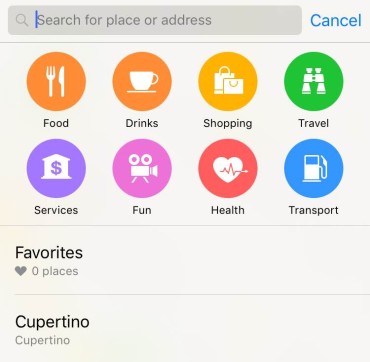
The key to driving innovation and business strategy lies in the ability to leverage real-time data and automating critical business processes.
IDC estimates that 40 percent of all technology spending will go toward digital transformations, with enterprises spending more than $2 trillion this year alone. It may be hard to believe that $2 trillion will be spent on digital transformation, especially considering that everyone seems to have a different definition of what we mean by the term “digital transformation.”
Whether you define it according to process, modernization of legacy systems, or an evolution of business, three commonalities exist when we consider ‘digital transformation:’
- Digital transformations begin and end with the customer at the center of everything
- A nurturing and curious culture encourages continuous and sustainable innovation
- The mind-set and intelligence to embrace and collaborate with partners that bring new thinking and skill sets that would enable them to reach new heights together.
It’s a fairly common problem for executives to spend considerable budgets on agile transformation programs, only to find they have not achieved the desired results. What’s more, it has led to confusion among company employees and partners alike. Teams are being pulled between two very different points of focus: one that’s driven by requirements and tight planning, and the other driven by a libertarian and noncommittal philosophy.
See also: Overcoming the 3 Largest Obstacles to Digital Transformation
Despite these different points of tension, most agree that the key to driving innovation and business strategy lies in the ability to leverage real-time data and automating critical business processes. This tends to form the foundation of digital transformation. Specific examples help demonstrate the benefits of becoming a data-driven organization and how AI and machine learning make data smarter while adding velocity to customer identification and experiences:
- Spotify collects data and continually updates its engine. If you love the Killers, then Spotify’s algorithm makes note and adds it and similar music to your recommended playlist. By keeping track of what music you listened to, liked, and skipped over, Spotify continually curates a customized and personal mixtape exclusively for you
- Stitch Fix has hundreds collecting and analyzing data. The more collaboration that happens between Stitch Fix humans and machines, the more efficiencies the business realizes. Over time, Stitch Fix learns more about what customers want, which cuts down on returns as well as warehouse space.
Beyond the importance of real-time data, companies approach their digital challenges in one of three ways: building their own technology, buying technology and talent through the acquisition of a strong digital player, or finding an aligned partner that can synergistically help them grow and benefit from the combined strengths of both companies.
In this new era of companies driving to transform all aspects of their business digitally, they are discovering they have great difficulty trying to accomplish the transformation without outside help.
Several decades before the digital revolution was in motion, and companies were pressed to embrace digital transformation, business partnerships were as common as P&Ls. Surprisingly, many of those same concepts used in older business partnerships resonate with today’s digital partnership approaches. In Rosabeth Moss Kanter’s 1994 Harvard Business Review article, “Collaborative Advantage: The Art of Alliances,” she outlined three basic criteria that fit today’s partnering strategy nicely. They are:
1. Self-analysis: Relationships get off to a good start when partners know themselves and their industry, and when they have assessed changing industry conditions and decided to seek an alliance.
2. Chemistry: This involves highlighting the personal side of business relationships but not denying the importance of sound financial and strategic analyses.
3. Compatibility: The courtship period tests compatibility on broad historical, philosophical, and strategic grounds: common experiences, values and principles, and hopes for the future.
We’ve arrived at this phase of our digital economy after many decades in which human society and culture swiftly progressed from mechanical and analog electric technology to a ubiquitous landscape of interconnected digital technologies. It has been touted as the Digital Revolution, and the hallmark of this revolution is the ability to capture and leverage real-time data to immediately impact business outcomes.
The fast-changing digital landscape and the technologies driving it have helped open doors for newcomers and created significant obstacles for incumbents to overcome.
The new digital theater of interacting with customers and engaging them confounded businesses that had been prospering for more than fifty years. With the assistance of real-time data, companies will be able to evolve to a more agile model, and more effectively implement a digital transformation.



























